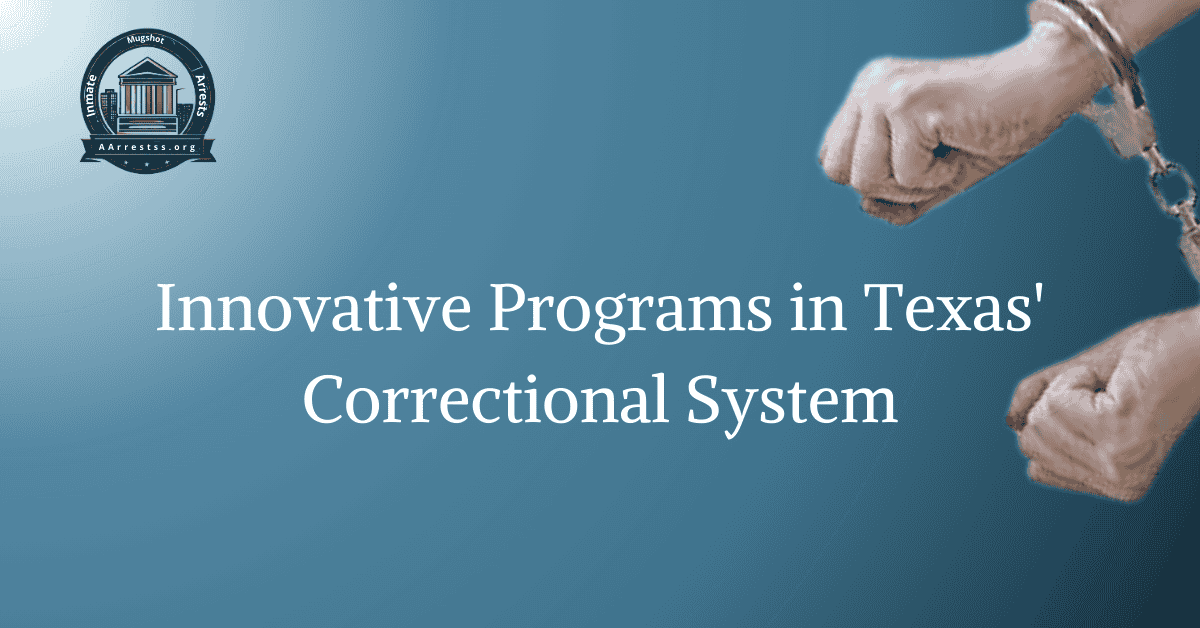Innovative Programs in Texas’ Correctional System
The correctional system in Texas is known for its innovative programs aimed at rehabilitation and reducing recidivism rates. These programs focus on providing inmates with education, vocational training, and mental health support to help them reintegrate successfully into society upon release.
One such program is the Vocational Rehabilitation Program, which offers a variety of vocational training courses to inmates. These courses range from automotive repair and construction to culinary arts and computer programming. By equipping inmates with valuable skills and certifications, this program increases their chances of finding employment and leading productive lives after incarceration.
Programs for Rehabilitation and Reduction of Recidivism Rates
There are several innovative programs in the correctional system of Texas that have been designed to rehabilitate inmates and reduce recidivism rates. These programs aim to address the root causes of criminal behavior and provide inmates with the necessary support to successfully reintegrate into society upon their release.
The Vocational Rehabilitation Program
One such program is the Vocational Rehabilitation Program, which offers a wide range of vocational training courses to inmates. These courses cover various fields such as automotive repair, construction, culinary arts, and computer programming. The program focuses on equipping inmates with valuable skills and certifications that can significantly increase their chances of finding employment and leading productive lives after their incarceration.
Educational Programs
In addition to vocational training, the correctional system in Texas also provides inmates with access to education programs. These programs aim to improve inmates’ literacy levels, enhance their knowledge, and expand their opportunities for personal and professional growth. By offering educational opportunities, the system aims to empower inmates and enable them to make positive changes in their lives.
Mental Health Support Programs
Mental health support is an essential aspect of rehabilitation and reducing recidivism rates. The correctional system in Texas recognizes this and has implemented programs that focus on providing inmates with mental health support. These programs aim to address and treat mental health issues, such as depression, anxiety, and post-traumatic stress disorder, which can contribute to criminal behavior. By addressing these underlying issues, the system aims to improve inmates’ well-being and reduce the likelihood of reoffending.
Reentry Preparation Programs
Preparing inmates for successful reentry into society is crucial for reducing recidivism rates. The correctional system in Texas offers reentry preparation programs that focus on helping inmates develop essential life skills, such as communication, problem-solving, and decision-making. These programs also provide assistance in securing housing, employment, and community support networks, ensuring a smoother transition from incarceration to life outside the prison walls.
Substance Abuse Treatment Programs
Substance abuse is a significant contributing factor to criminal behavior and recidivism. To address this issue, the correctional system in Texas provides inmates with access to substance abuse treatment programs. These programs offer counseling, therapy, and support to help inmates overcome their addiction and develop healthier coping mechanisms. By addressing substance abuse issues, the system aims to reduce the likelihood of relapse and reoffending.
FAQs
What are some innovative programs in Texas’ Correctional System?
One innovative program in Texas’ Correctional System is the Vocational Rehabilitation Program, which aims to provide inmates with job skills and training to increase their chances of successful reintegration into society upon release. This program offers various vocational courses such as carpentry, culinary arts, and automotive repair.
How does the Education Program in Texas’ Correctional System work?
The Education Program in Texas’ Correctional System focuses on providing educational opportunities to inmates, including basic literacy courses, GED preparation, and vocational education. This program aims to reduce recidivism rates by equipping inmates with the necessary knowledge and skills to pursue a successful career after their release.
What is the Purpose of the Restorative Justice Program in Texas’ Correctional System?
The Restorative Justice Program in Texas’ Correctional System aims to foster healing and reconciliation between offenders, victims, and the community. This program focuses on repairing the harm caused by the crime through various methods, such as victim-offender mediation, restitution, and community service.
How does the Substance Abuse Treatment Program benefit inmates in Texas’ Correctional System?
The Substance Abuse Treatment Program in Texas’ Correctional System provides inmates with access to comprehensive substance abuse treatment services, including counseling, therapy, and support groups. This program aims to address the underlying issues that contribute to criminal behavior and promote long-term recovery and rehabilitation.
What is the purpose of the Therapeutic Community Program in Texas’ Correctional System?
The Therapeutic Community Program in Texas’ Correctional System is a long-term residential treatment program for inmates with substance abuse or mental health issues. This program focuses on creating a supportive and structured environment where participants can develop essential life skills, address their addiction or mental health challenges, and reintegrate into society successfully.
How does the Pre-Release Program in Texas’ Correctional System prepare inmates for reentry into society?
The Pre-Release Program in Texas’ Correctional System is designed to assist inmates in their transition from prison to the community. This program offers various services, including job placement assistance, life skills training, and counseling, to ensure that inmates have the necessary support and resources to successfully reintegrate into society and lead productive lives after their release.








